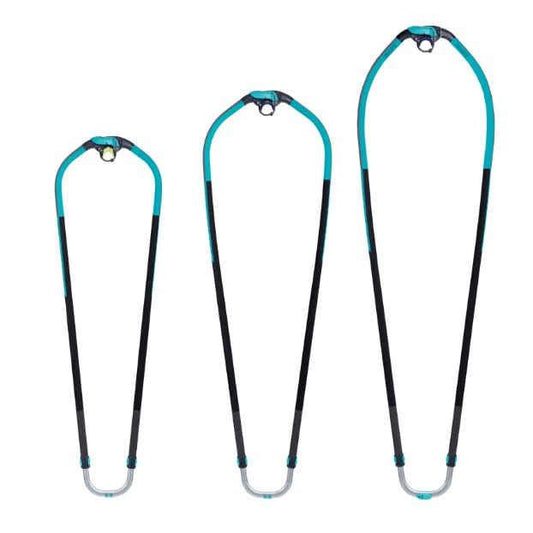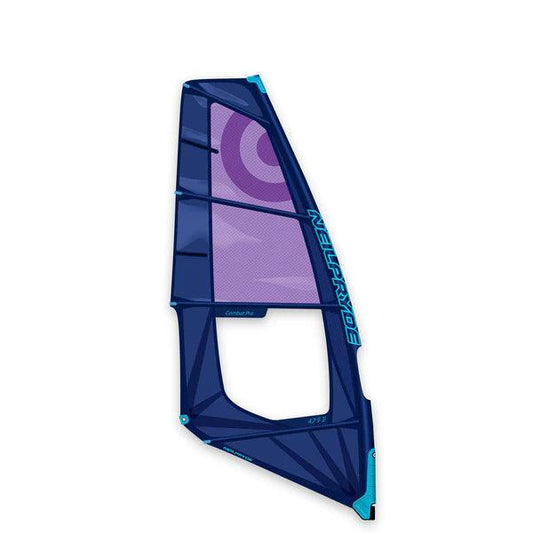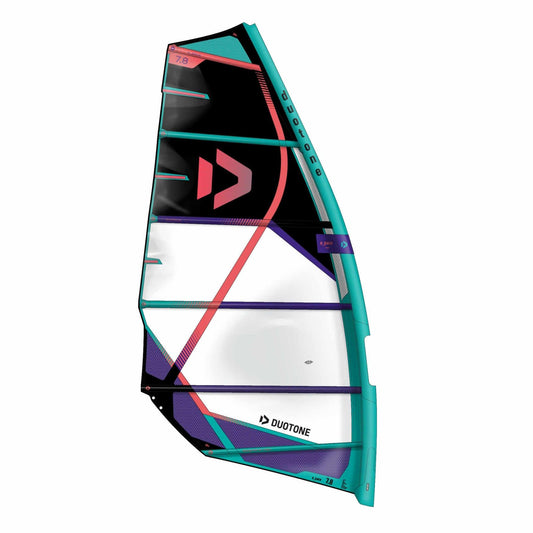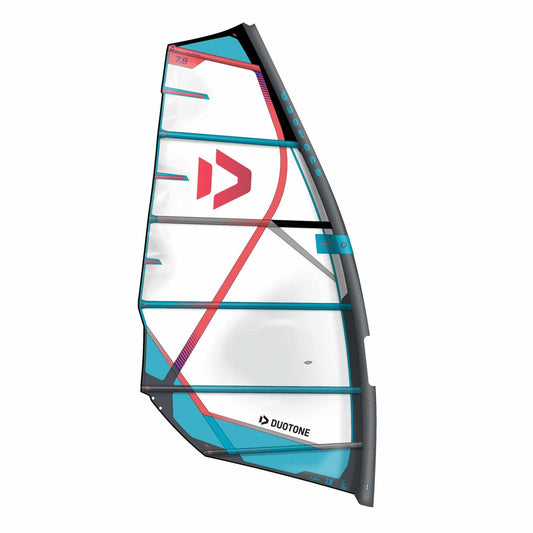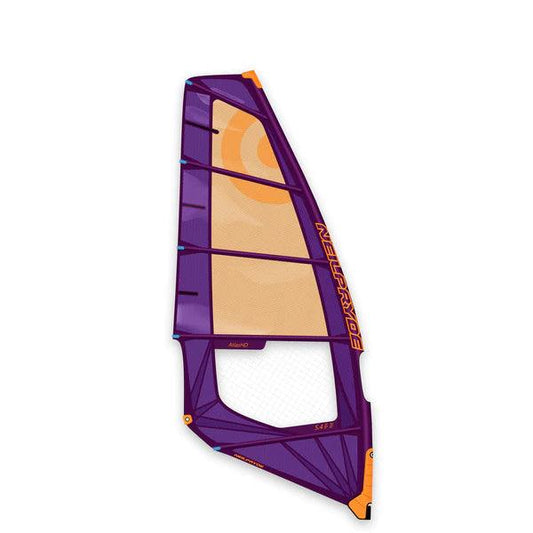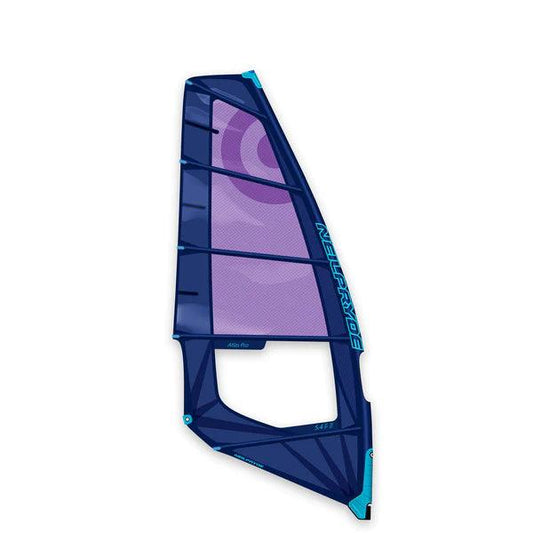What do you need for windsurfing? | Poole Harbour Watersports
India HudsonShare
What do you need for windsurfing?
Windsurfing is one of the original water sports that has lasted the test of time and every year encourages more people of all ages into the sport and stuck on the adrenaline bug!
When learning, windsurfing equipment can be daunting and there is a lot of pieces to remember. There is nothing more annoying than forgetting a small yet vital piece of kit… no use having your rig and board without your uj!
As such, we will breakdown what equipment you need, whether you are starting out windsurfing or progressing and need more support for your kit.

What equipment do you need to get started windsurfing?
The Board (and the fin):
Coming in all shapes and sizes dependent on your skill level and size. Shorter, thinner boards are designed for wave riding and freestyle, more manoeuvrable and lighter for speed and jumps. Longer, wider boards with more volume are ideal for learning/ progressing and getting into windsurfing.
When beginning in windsurfing, you want to choose or look for a board that is wide and stable and at least around 170L in volume. Stability comes the width as you will be moving around the board more slowly and want to get used to moving around on the board. Important when starting out is also to have a board with a retractable daggerboard or additional centre fin in the middle of the board, as this helps you to go upwind with more ease at lower winds and not be ‘stuck’ only going downwind when you are not so confident.
Take a look at our most popular beginner windsurf board models.

The rig:
This is the complete set up that is needed to ‘rig’ your sail and to attach to your windsurf board to get you going on the water, without the rig you will just be standing on a board!

What makes up a windsurf rig?
The Sail:
This powers you through the wind made up of dacron film and monofilm. The size of the sail depends on your size, ability and specifically the wind conditions you are using it in. Sails are measured in metres squared, and smaller sizes are suitable for smaller riders, complete beginners or in windy and wavey conditions (you don’t want to get overpowered). Larger size sails are more practical in lighter winds, for larger riders for more power and on a foil.
For an adult beginner windsurfer you will look for a sail around 4.0-6.0m2. Women tend to go for 4.0-5.0m2 and men 5.0-6.5m2. Kids will tend to go on anything up to 4.0m2 depending on their capabilities and height (on our windsurf lesson, under age 10 will have a 1.5m2 sail, and age 10+ will have 3.5m2). These sizes are a general rule of thumb and something to bear in mind and you don’t have to stick to this, it is mainly focusing on what size sail can offer enough power in the wind and what you can lift up off the water.
Each sail will rig differently but on the sail it will let you know what boom length and luff (mast+ possible extension) length are recommended.
The Boom:
Once attached to the sail, the boom provides tension and shape to the sail, and allows you to hold onto the rig to steer and maintain control. The boom is attached to the mast at one end and the other is attached to the sail. On the mast end, the boom can be adjusted depending on how tall you are. A comfortable height for the boom should be between chest and shoulder height. The other end of the boom is also adjustable, so you can extend the length depending on the sail size you use.
The Mast:
This inserts along the luff tube on one side of the sail and keeps it upright and the boom is attached to the mast to allow for steering and turns. Masts are generally separated in two and made from a combination of fibreglass and carbon. Carbon is a great component as it makes the mast light yet stiff. Carbon contents differ in masts and as such so does the flex of the mast (more carbon = less flex). Masts come in set sizes and generally in increments of 30, eg. 370, 400, 430, 460… you can then use extensions to reach the desired luff length for each sail.
The extension:
A key bit of windsurfing equipment not often talked about. Windsurfing sails need a specific mast length that normally does not fit into any standard. When a sail says its length is 418cms, this means you rig it on a 400cm mast then set the mast extension to 18cms.
The mast extension is also where you’ll find the rope and pulleys to give the sail its tension.
The UJ:
The UJ (Universal Joint) is how you attach the sail to the board. This is often attached to the board first, then to the sail after you have rigged it. You can have different style joints, rubber, tendon and knuckle. Rubber is most popularly used, knuckle is popular on an inflatable board as it reduces the tension on the material, and tendons are more flexible so popular in racing and wave when you want more reactivity.
The Uphaul:
An essential, especially when beginning. This is what you attach from the where the mast and boom join to the bottom of extension so that you can lift up the rig whilst on the board.
These components make up the rig of your windsurf set up.

What equipment do you need when you progress?
Footstraps:
Your board should come with these, but when you first learn, you will not need these until you pick up speed and get up on the plane. Footstraps are designed to connect your body to the board, which results in greater control in stronger winds and faster speeds. Attaching yourself to the board also gives you the ability to jump – this is when windsurfing gets very exciting! A necessity when you are advancing.
Harness and harness lines:
As you get to the stage when you are planning, you will find it is harder to hold onto the boom with only your hands without being pulled forwards or straining your back in the process. Harness lines attach to each side of your boom so that when wearing your harness, you can hook in and allow your body to take some of the power rather than your arms. You can then lean further back and rest in the footstraps to enjoy stronger winds and faster planning speeds.
See what harnesses and lines we have on offer.

Wetsuit:
A wetsuit isn’t necessarily only for when you are more advanced at windsurfing, but once you progress you are more likely to go out in stronger, colder winds and throughout winter. We recommend keeping warm with a wetsuit as the wind is chilly!
Check out our winter options and summer wetsuits too.
Overall
In essence, it seems like a long list but with everything having an individual functionality, it all makes sense when you break it down!
Windsurfing kits can add up in cost, but especially when learning, second hand is a great option, or some great offers are around for complete packages – take a browse on our website for Windsurfing and get in contact for any more advice and information on windsurfing equipment whether beginner or advanced.
We not only can provide windsurfing equipment, but we can help your progression in the sport with lessons too! Beginner sessions start at £55 for 3 hours and we can offer private lessons hourly from £35-£45 too. Check on our lesson page - Windsurfing lessons

